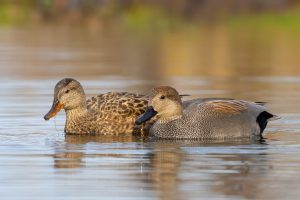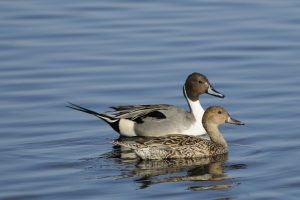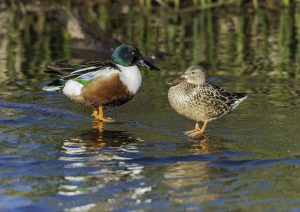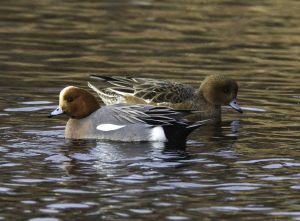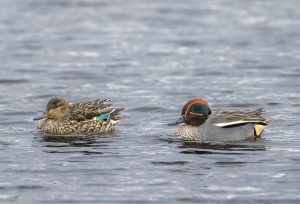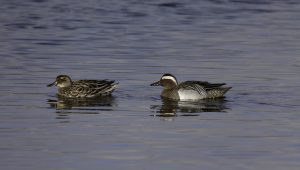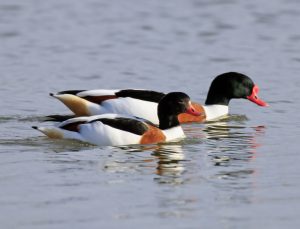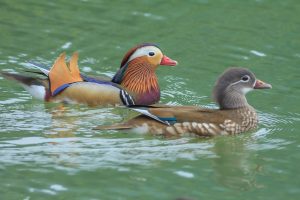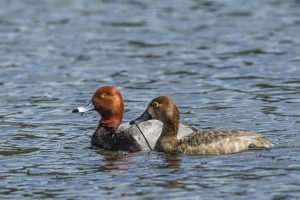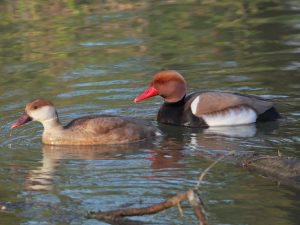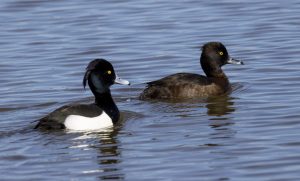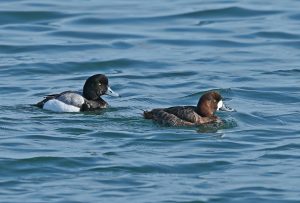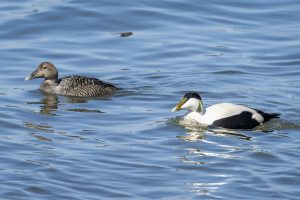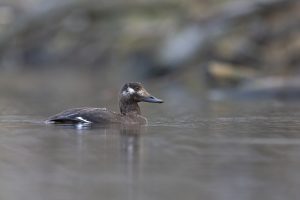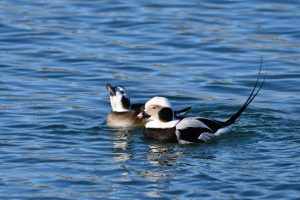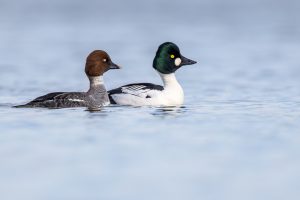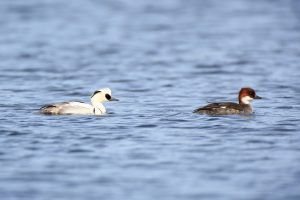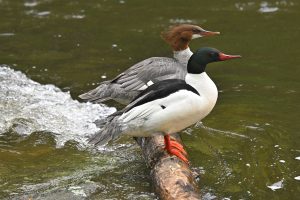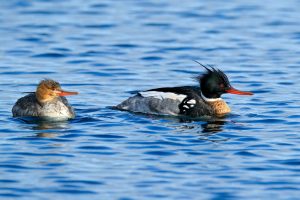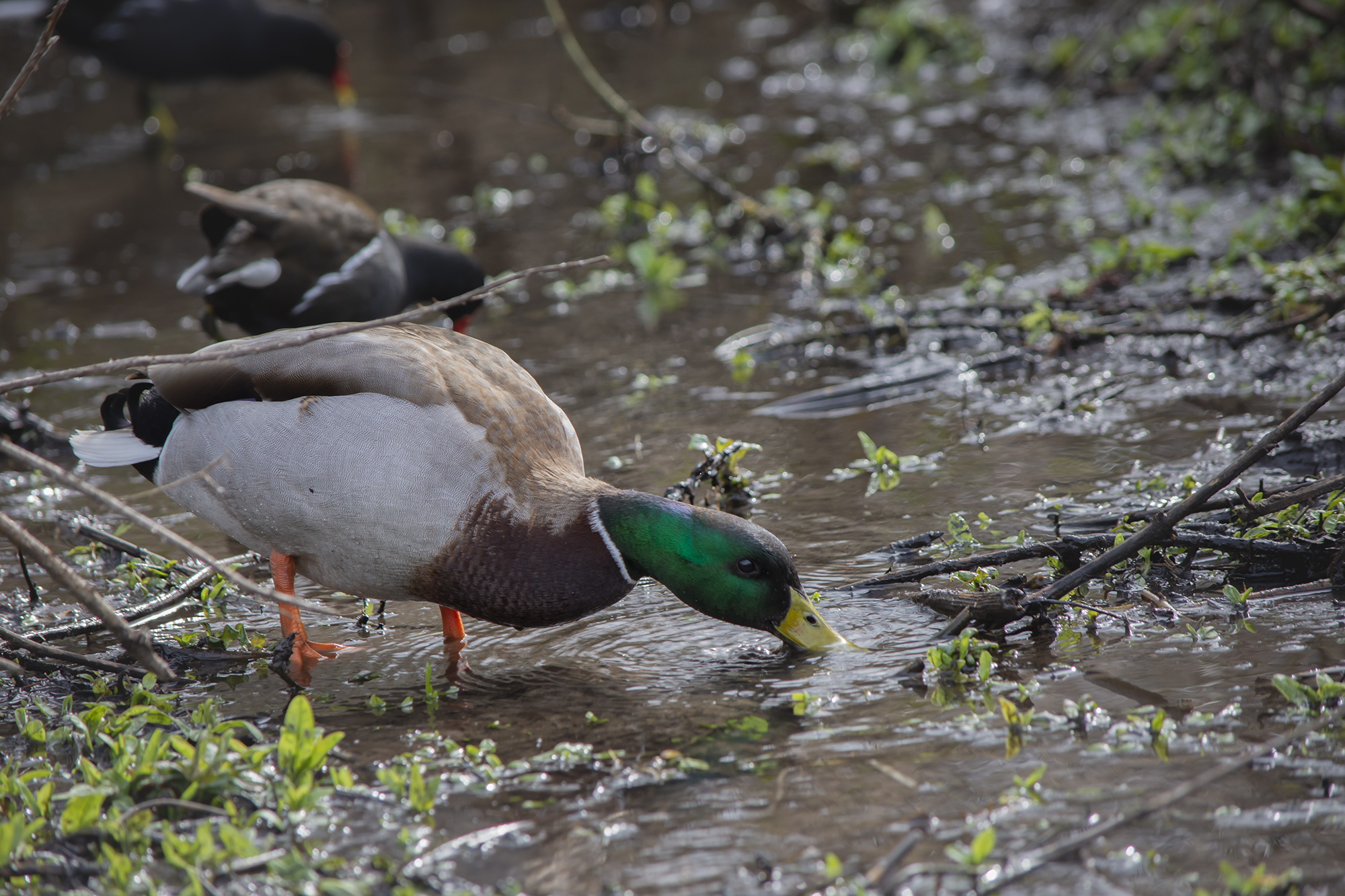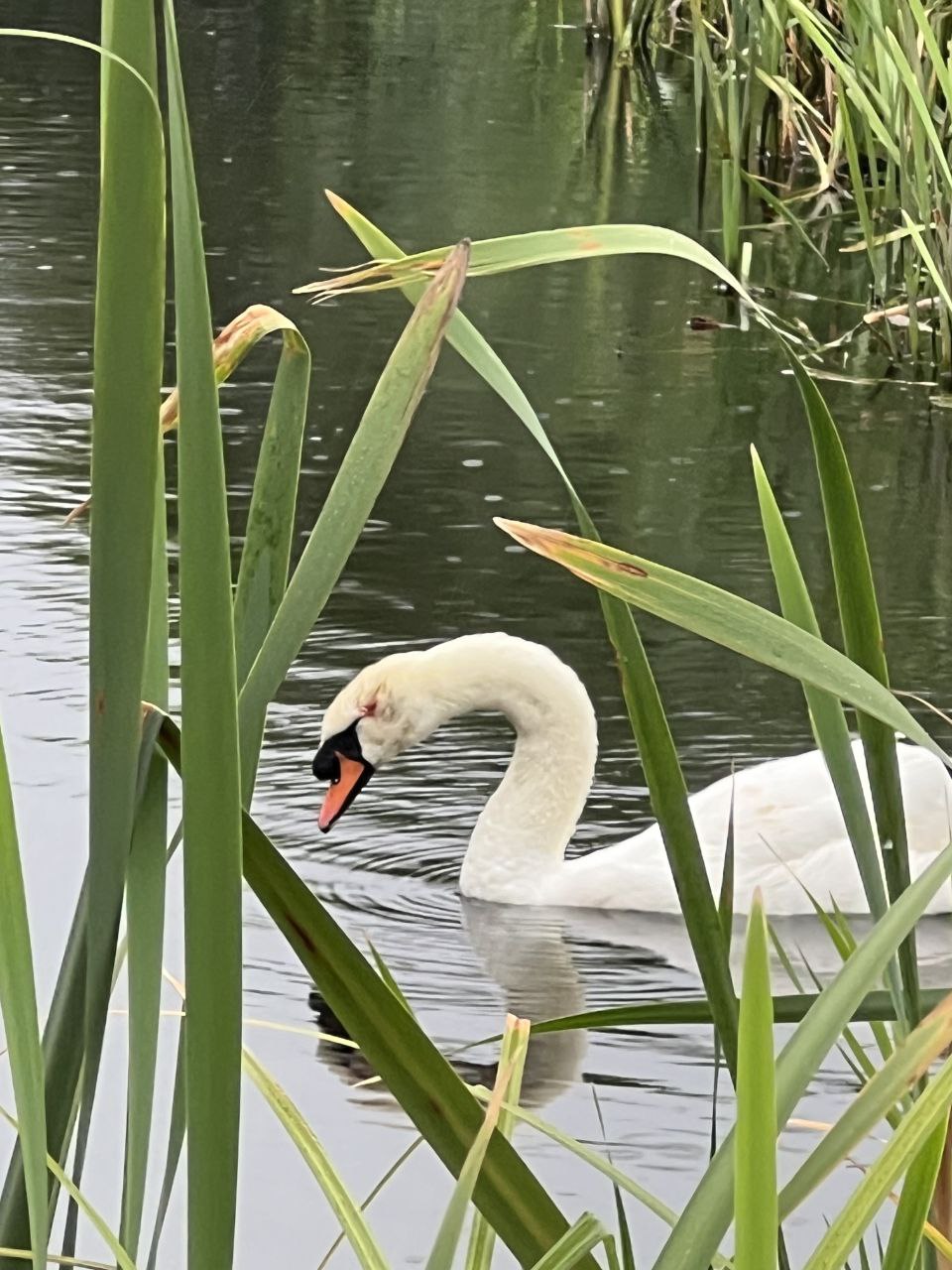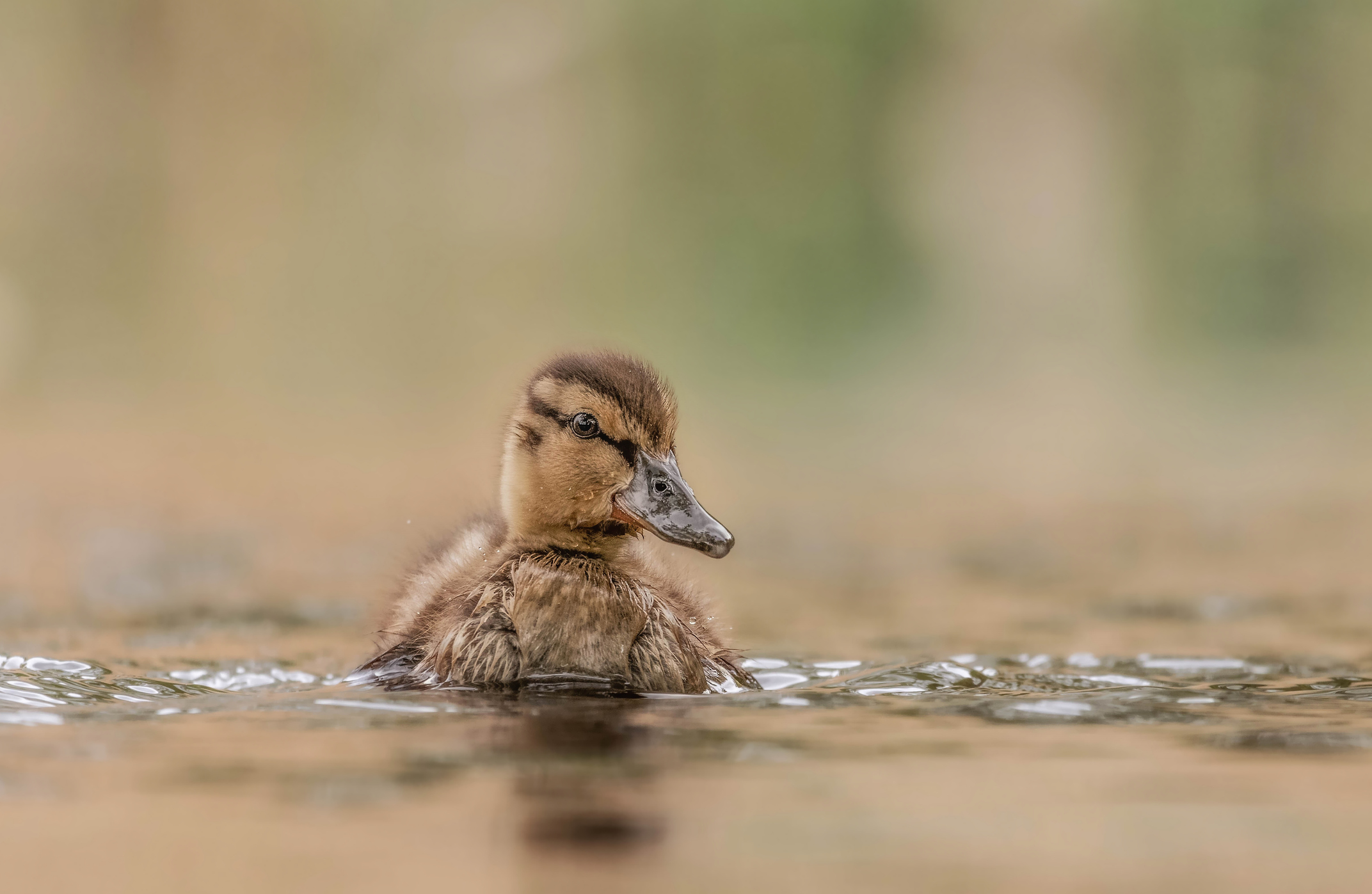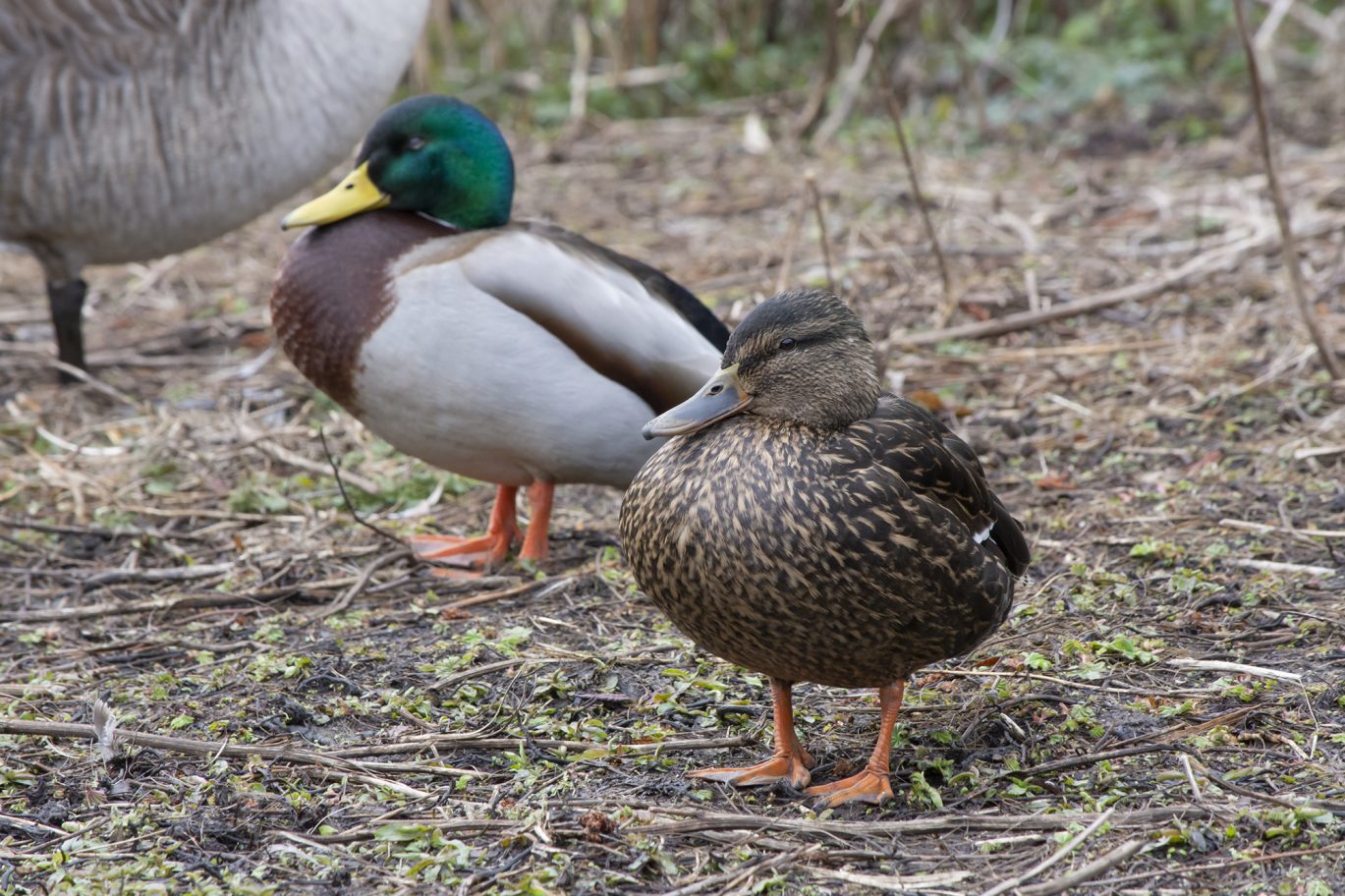
Ducks
Icons of the public park, these water birds provide joy to families across the country and are synonymous with Scotland’s ponds, lakes and rivers.
Ducks are the quintessential water bird; with waterproof feathers and webbed feet they live in a range of wetland habitats. They’re social creatures and have their own regional accents – just like us!
Where do ducks live?
Ducks live across the UK in different wetland habitats including canals, rivers, lakes, ponds, urban parks and coastal areas.
What do ducks eat?
Whilst different types of ducks (dabbling, diving or sawbills) have slightly different diets, they all usually eat a combination of weeds, seeds and small invertebrates.
For more information on what you can and cannot feed your local feathered friends, and how to feed them responsibly, check out our more in depth article: https://www.scottishspca.org/advice/what-to-feed-ducks/
How long do ducks live?
Depending on the breed, ducks live anywhere from 5 – 10 years on average. They need lots of space to swim and a healthy diet in order to stay fit and thriving.
Can ducks fly?
Yes, ducks can fly – but different breeds have different flying capabilities. Migratory ducks such as Mallards, Teals and Wigeons can fly exceptionally well. Some wild ducks don’t fly as well as others and most domestic ducks cannot fly at all. Domesticated breeds, such as those bred for meat production, often have heavier bodies and reduced wing strength due to selective breeding. Some domestic breeds such as Muscovies, Calls, East Indies and domesticated Mallards can fly somewhat but many owners choose to clip their wings to avoid this.
Do ducks have teeth?
No ducks don’t have teeth, instead they have a comb-like part of their bills called lamellae. This acts like a sieve, filtering food out of water and mud. They don’t physically chew their food as they have no mechanism to help them do so. Their bills help them to grab things in the water such as plant matter and small prey.
Do ducks mate for life?
A duck’s mating habits are dependent on the breed but most of the time the answer is no. Ducks take part in something called seasonal monogamy which means they stay coupled up for a breeding season but part ways after this. They typically find new mates each year, with the male often leaving just before or after egg hatch.
Duck breeds
There are 162 duck breeds around the world, 22 of which we have here in the UK. Most of the list are native but there are some that have been introduced into our wildlife.
There are different types of duck such as dabbling, diving and sawbills who are categorised by their feeding habits. Dabblers feed at the surface whilst divers go deeper under the water to scavenge for food. Sawbills are a type of diving duck with serrated bills that help them catch and hold fish.
Dabbling ducks
Mallards
Mallards are the most common duck here in the UK, and across the world. Male Mallards are referred to as ‘drakes’. They have distinctive, striking green heads and long yellow bills. Female Mallards, also known as ‘hens’, are the same shape as their male counterpart but are mostly brown with an orange bill. They’re also the only ones who quack.
Mallards reside in the UK all year round, but their population increases with winter migrants.
Gadwall
These ducks are slightly smaller than Mallards but look similar, the females especially. They can mostly be seen over winter but a few stay for the summer months too.
Pintail
Slimmer than other dabbling ducks, the males have a chocolate-brown coloured head and distinctive, long tail feathers. The females appear similar to the Mallard and Gadwall.
Only a small number of pintails breed in the UK and they’re mostly around in the winter months.
Shoveler
Much like their name suggests, these ducks have large, shovel-like bills. The females have brown, patterned bodies – similar to a hen (a female Mallard). The males have dark green heads, much like a drake (a male Mallard), but also have a chestnut-coloured side and blue on their forewing. They live in the UK for the entire year, with numbers growing during winter migration.
Wigeon
Females are usually a reddish-brown colour all over, and males have a chestnut-coloured head with a yellow forehead, a pink breast and light grey sides. They visit the UK from Iceland and Russia.
Only a small number of these ducks actually breed in the UK with many just coming for the winter months.
Teal
Significantly smaller than a Mallard, this dabbling duck can take-off vertically when startled or avoiding predators. Male Teals have a chestnut and green coloured head, with a horizontal white stripe across their body. Females have a dark brown patterned body, similar to female Mallards and Gadwalls.
A few of these ducks stay in the UK year-round, but numbers are significantly supplemented in winter.
Garganey
Small with brown feathers, these ducks are similar to Teals. In the springtime, the males have a white crescent shape over their eye, however this fades throughout the summer and they become less distinguishable from their female counterpart.
These ducks are our only species of summer migrant duck here in the UK. They migrate from central Africa in spring and early autumn.
Shelduck
A Shelduck is large and almost goose-like. With a striking, bright red bill and black heads that contrast their white and chestnut bodies, these ducks are here all year round.
The males are usually larger than the females and have a different shaped bill which bulges from the top of their head.
Mandarin
Native to east Asia, these beautiful, striking ducks were established in the UK in the early 20th century. They have become more widespread over the decades and can be easily identified, especially the male with its distinct bright colours and eye-catching patterns.
They don’t typically migrate, staying in their localised populations all year round.
Diving ducks
Pochard
Male Pochards usually have a bright reddish-brown head, a pale grey body and a black breast and tail. The females follow similar colouring but are more muted. In summer, they both turn mostly brown in colour.
A small number do breed in the UK, but numbers are supplemented in the winter months when they fly in from eastern Europe.
Red-crested Pochard
The Red-crested Pochard is larger than the common Pochard and visually these breeds look similar. One of the only differentiating factors, other than their larger size, is the males’ red bill.
Most of the breeding populations in the UK have been established from escaped collection birds.
Tufted duck
These ducks, named after their feathered hairdo, are small diving ducks. The males have a longer ‘tuft’ than the females and are characterised by their black body and white striped wings. The females are deep brown with a lighter brown on their flank. Both have eerily yellow eyes.
They breed across the UK and are here all year round, with numbers supplemented in the winter months.
Scaup
These ducks can look similar to a certain tufted counterpart, but the males are a lighter black in colour and have a lower, broader body. The females can be more difficult to distinguish but their body shape is different to the female Tufted duck.
They can be found during the winter and are the rarest breeding UK ducks.
Eider
Usually found around marine habitats, this breed is the heaviest duck in UK waters and the fastest flying. During the winter they dive deep under the water to feed on mussels. The males are mostly black and white, with a pale pink breast and the females are brown and patterned. They both have long thin beaks to aid in shellfish hunting and can be seen all around the UK.
Scoter
Female Scoters are dark brown with a pale patch on their cheek and the males are jet black with a spot of yellow on their bill. They’re seabirds and breed in Scotland and Ireland. These ducks are now red listed as their population is in decline.
Velvet Scoter
The Velvet Scoter is heavier built than its common cousin and has a wedge-like bill. The males have more yellow on their bill and have white under their eye. They visit only in the winter and can be spotted along the sea.
Long-tailed duck
Just as their name suggests, the males of this breed have a comically elongated tail. They have a black and grey pattern on their body and a pink stripe on their bill. They have small round heads, and particularly large foreheads. The females are similar looking but are brown and have shorter tail feathers.
They can be spotted in the UK having come from northern Scandinavia and the Arctic tundra.
Goldeneye
Another duck named for their distinctive appearance, these yellow-eyed birds can be found on freshwater and seawater. The males have black and white bodies, accompanied by a green head, and the females are mainly grey with a brown head.
A small number breed in the UK but most come just for the winter.
Sawbills
Smew
Small and delicate, these ducks have compact bills, and the males have a striking black and white colouring. The females are brown with a white neck and a red face. Like the Tufted duck, they have a tuft of feathers on the back of their head.
A small number migrate to the UK in winter, usually to the south of England.
Goosander
Goosander ducks are similar looking to Mallards, yet their long, serrated bills set them apart. Their bills have a downward hook at the end, helping them forage and catch food. The males have a dark green head, a black and white body and a red bill. The females have an orange-brown head with a grey and black body and the same distinctive red bill.
Only a small number breed in the UK, with their population increasing in the winter.
Red-breasted Merganser
This duck looks extremely similar to the Goosander with its long, serrated bill. One of the only differences between them are the tufts of feathers on their heads, which both males and females have, and their bill which is slightly upturned.
Some breed inland in the UK, but most are found in marine habitats. You can usually spot them around the coasts during winter.
What to do if you spot an injured duck
If you come across an injured duck it’s important to stay calm and give it space, approaching and fussing over it will just make it more stressed. If it’s in immediate danger, such as on a busy road, then you can move it, but do so carefully.
If you can see any visible wounds, bleeding or obviously broken bones, call our helpline on 03000 999 999.
If you’re worried about a duckling you’ve spotted, we have an article on how to deal with these baby birds: https://www.scottishspca.org/advice/ducklings/
For more information on helping an injured animal check out the article linked below: https://www.scottishspca.org/advice/injured-advice/
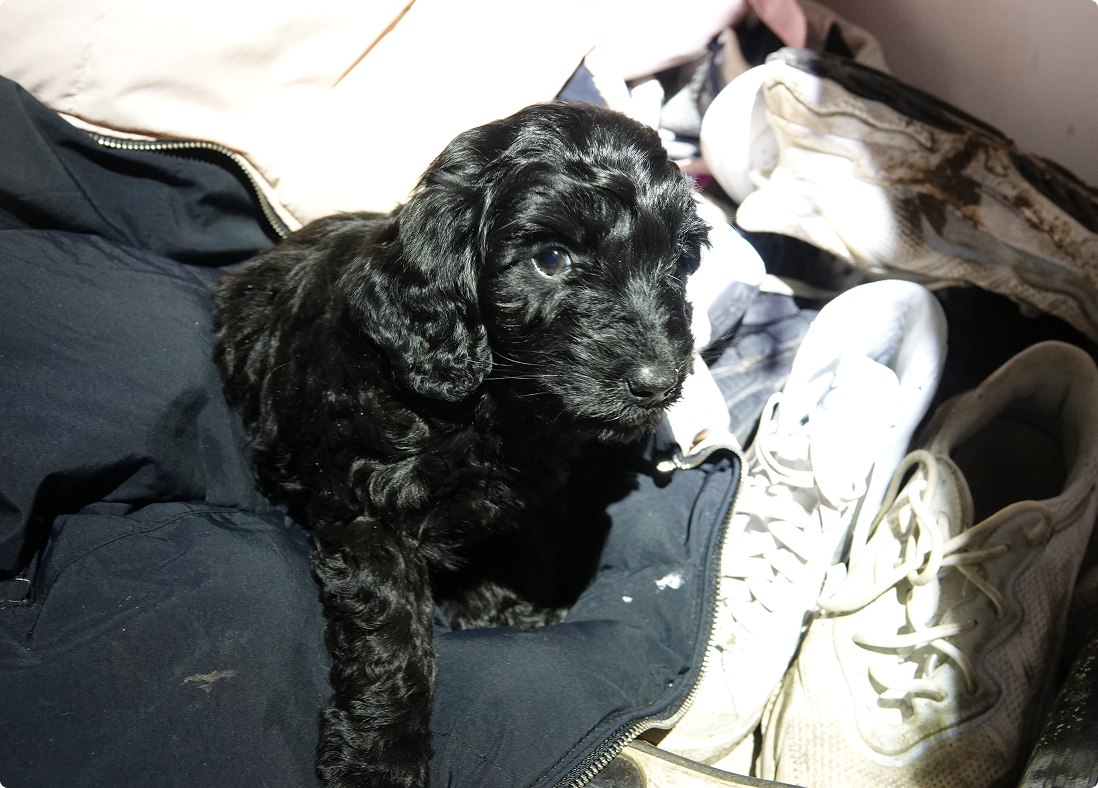
Puppies across Scotland need your help
Please consider giving a monthly donation today. Give Scotland’s animals the gift of safety this winter and beyond. The criminals involved in the low-welfare puppy trade never stop. And with your help, neither will we. Every £1 matters to puppies like Winnie.

